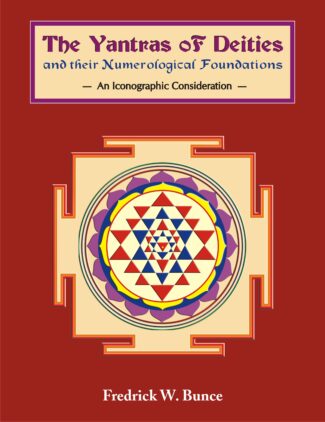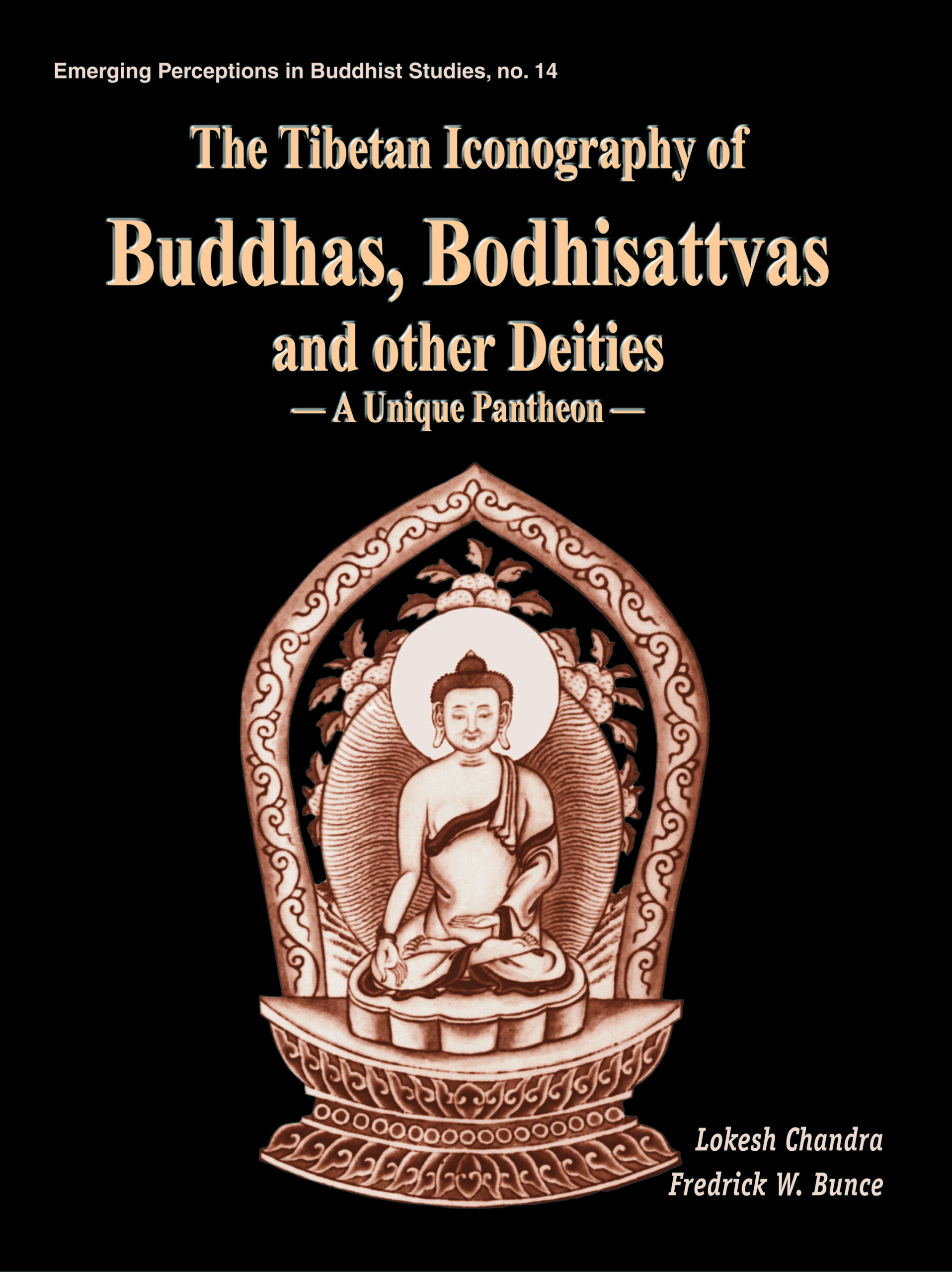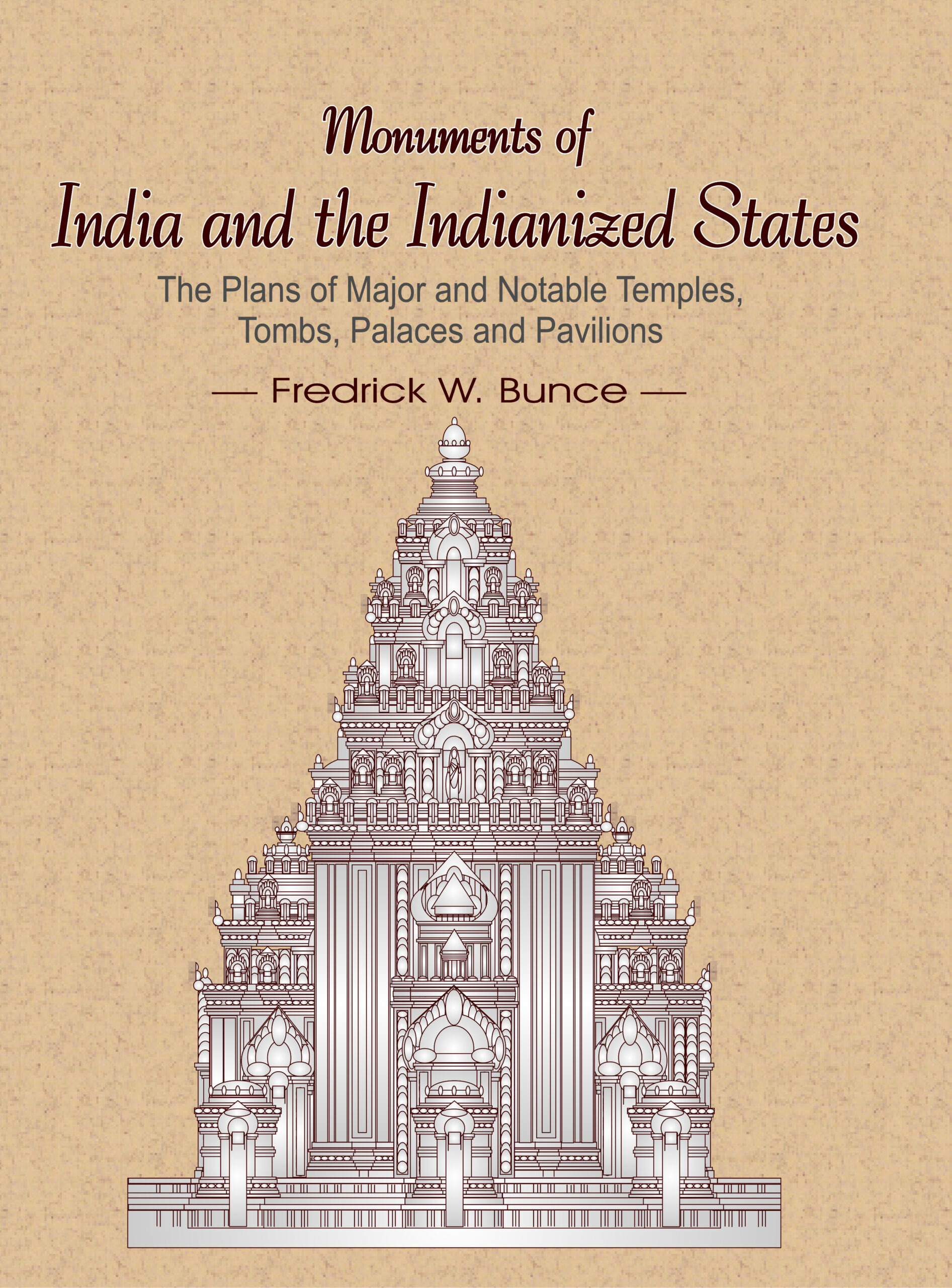

Yantras of Deities a...
Yantras of Deities and their Numerological Foundations
An Iconographic Consideration by: Fredrick W. BunceThe book, highlights the essential import of the innocuous-looking, yet enigmatic, diagrams called Yantras surfacing from the occult practices of the tantrics. It examines a range of tantric yantras, with their varieties, applications, modes of construction and above all their iconographic features.
Original price was: ₹2,000.00.₹1,800.00Current price is: ₹1,800.00.
ISBN: 9788124601747
Year Of Publication: 2017
Edition: 4th
Pages : xvi, 293
Bibliographic Details : 106 Yantra Diagrams; Bibliography; Index
Language : English
Binding : Hardcover
Publisher: D.K. Printworld Pvt. Ltd.
Size: 29 cm.
Weight: 1300
Hinduism is known for the bewildering profusion of its deities, who are represented not only in two or three dimensional anthropomorphic images, but also in abstract configurations, known as yantras. In yantras is, thus, seen almost a parallel with the surfeit of deities in Hindu tradition. Literally meaning an instrument, apparatus or a talisman, yantra is a kind of mystical diagram used, in tantra, for both meditation and invoking a divinity, and is believed to possess/arouse occult powers. Drawn only by the adept: the ones schooled in this arcane, highly intricate process, and energized by siddh mantras, these seemingly innocuous geometrical figures are employed for any number of reasons or desires: whether to attain wealth, ward off disease, beget a son, vanquish enemies, or even to cause somebodys death. This book, the latest from Professor Bunce, highlights the essential import of these innocuous-looking, yet enigmatic, diagrams surfacing from the occult Practices of the tantrics. The author, an internationally known scholar of Oriental Art, examines a range of tantric yantras, with their varieties, applications, modes of construction and, above all, their iconographic features. Also inter- woven in his text are lucid descriptions of all else associated with a yantra, notably, its deity, its specific purpose, its predominant and secondary numbers and its mantra. Carrying beautiful visual representations of over a hundred yantras, Professor Bunces study holds out enduring appeal to the readers concerned not only with the iconography of tantric yantras, but their mystifying under-pinnings as well.
List of Plates
Abbreviations
Preface
Introduction
Numbers as Symbols
Yantra Construction, Variations and Application
Constructing the Sacred Enclosure (Bhupura)
Variations on the Bhupura Shape
Construction of the Petal Shape
Basic Yantra Iconography
Color as Iconography
Applications of the Yantra Form
Temple Plan Based on a Mandala (Yantra)
Astronomical Chart Based on a Sarvatabhadra Yantra
Janan Yantra
Linga Mandala as Yantra
Rajasthani Yantra (c. 17th C.)
Thangka with Nine Mandala-Yantras
Shri Chakra Yantra
Deity Yantras
Amba Matta Yantra
Annapurna Yantra
Bagla Yantra (I)
Bagla Mukhi Yantra (II)
Bagla Mukhi Yantra (III)
Bagla Mukhi Yantra (IV)
Bagla Mukhi Yantra (V)
Balarama (Avatara) Yantra
Bala (Shakti) Yantra (I)
Bala (Shakti) Yantra (II)
Bala-Tripura Yantra
Bhairon Yantra (I)
Bhairon Yantra (II)
Bhuvaneshvari Yantra (I)
Bhuvaneshvari Yantra (II)
Bhuvaneshvari Yantra (III)
Chinnamasta Yantra (I)
Chinnamasta Yantra (II)
Chinnamasta Yantra (III)
Devi Yantra
Dhanda Yantra
Dhumavati Yantra (I)
Dhumavati Yantra (II)
Durga Yantra (I)
Durga Yantra (II)
Durga Yantra (III)
Durga Yantra (IV)
Ganesha Yantra (I)
Ganesha Yantra (II)
Ganesha Yantra (III)
Gayatri Yantra
Hanumat (Hanuman Yantra) (I)
Hanumat (Hanuman Yantra) (II)
Hayagriva Yantra
Kali Yantra (I)
Kali Yantra (II)
Kali Yantra (III)
Kali Yantra (IV)
Kalki Yantra
Kamala Yantra (I)
Kamala Yantra (II)
Krishna (Avatara) Yantra (I)
Krishna (Gopala) Yantra (II)
Kurma (Avatara) Yantra
Maha-Ganapati Yantra (I)
Maha-Ganapati Yantra (II)
Maha-Ganapati Yantra (III)
Maha-Lakshmi Yantra (I)
Maha-Lakshmi Yantra (II)
Maha-Lakshmi Yantra (III)
Maha-Lakshmi Yantra (IV)
Maha-Lakshmi Yantra (V)
Maha-Mritanje (Shiva) Yantra
Mangala (Hanuman) Yantra
Matangi Yantra (I)
Matangi Yantra (II)
Matangi Yantra (III)
Matsya (Avatara) Yantra
Mrit-Sanjivani Yantra
Narasimha (Avatara) Yantra
Navagraha Yantra (Magic Squares)
Navagraha Yantra (Combined)
Parashurama (Avatara) Yantra
Rama (Avatara) Yantra (I)
Rama (Avatara) Yantra (II)
Sarasvati Yantra
Sharabha Yantra
Shitala Yantra
Shiva Yantra (I)
Shiva Yantra (II)
Shodashi (Tripura-Sundari) Yantra (I)
Shodashi (Tripura-Sundari) Yantra (II)
Shodashi (Tripura-Sundari) Yantra (III)
Shri-Chakram Yantra
Shyama (Kali) Yantra
Surya Yantra (I)
Surya Yantra (II)
Tara Yantra (I)
Tara Yantra (II)
Tara Yantra (III)
Tripura(ntaka)-Bhairavi Yantra (I)
Tripura(ntaka)-Bhairavi Yantra (II)
Tripura(ntaka)-Bhairavi Yantra (III)
Tripura(ntaka)-Bhairavi Yantra (IV)
Vamana (Avatara) Yantra
Varaha (Avatara) Yantra
Vartali Yantra
Vighnaraja Yantra
Vishnu Yantra (I)
Vishnu Yantra (II)
Vishnu Yantra (III)
Vishnu Yantra (IV)
Postscriptum
Notes
Bibliography
Iconic Distribution
Index
Acknowledgements

















